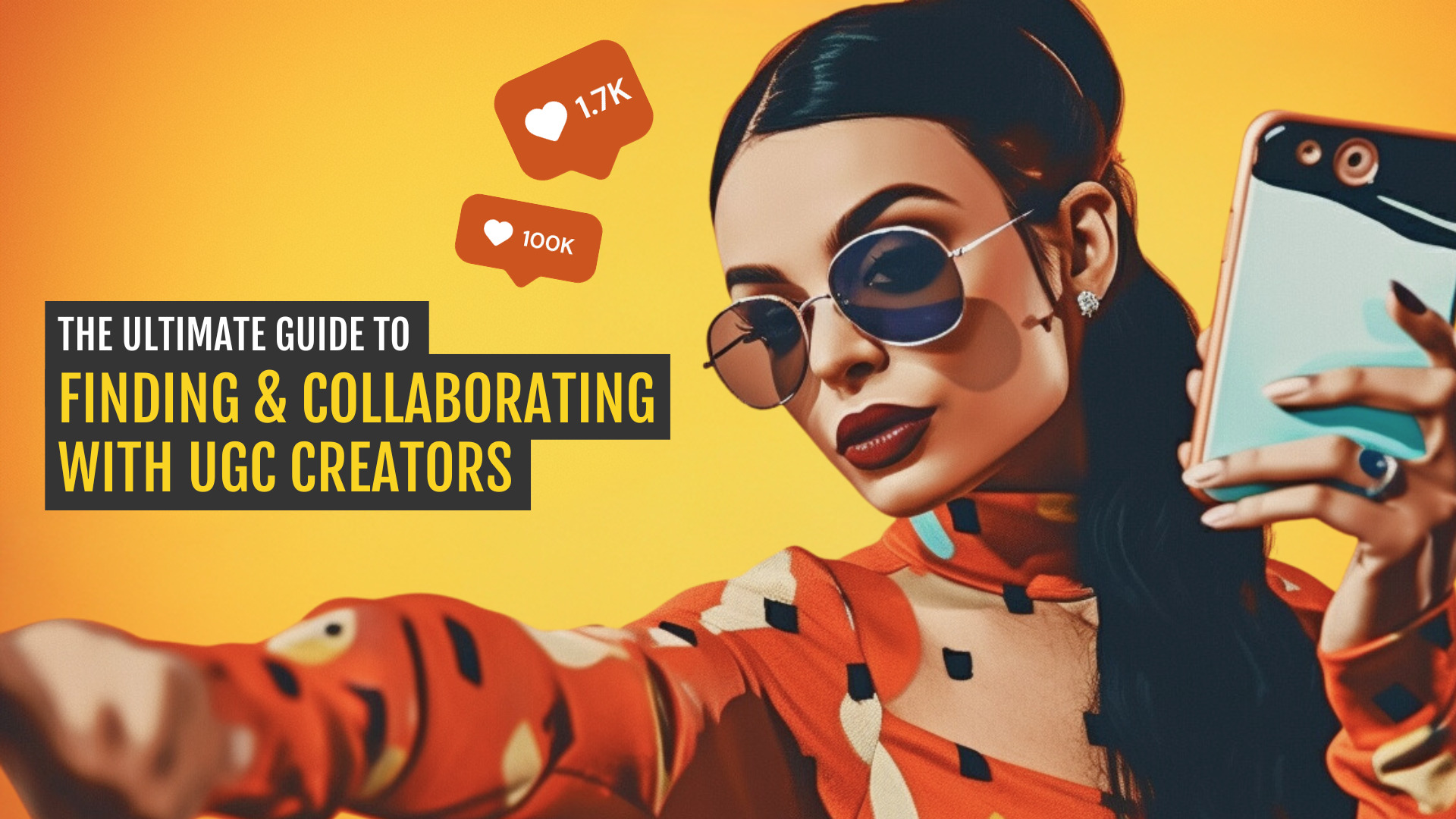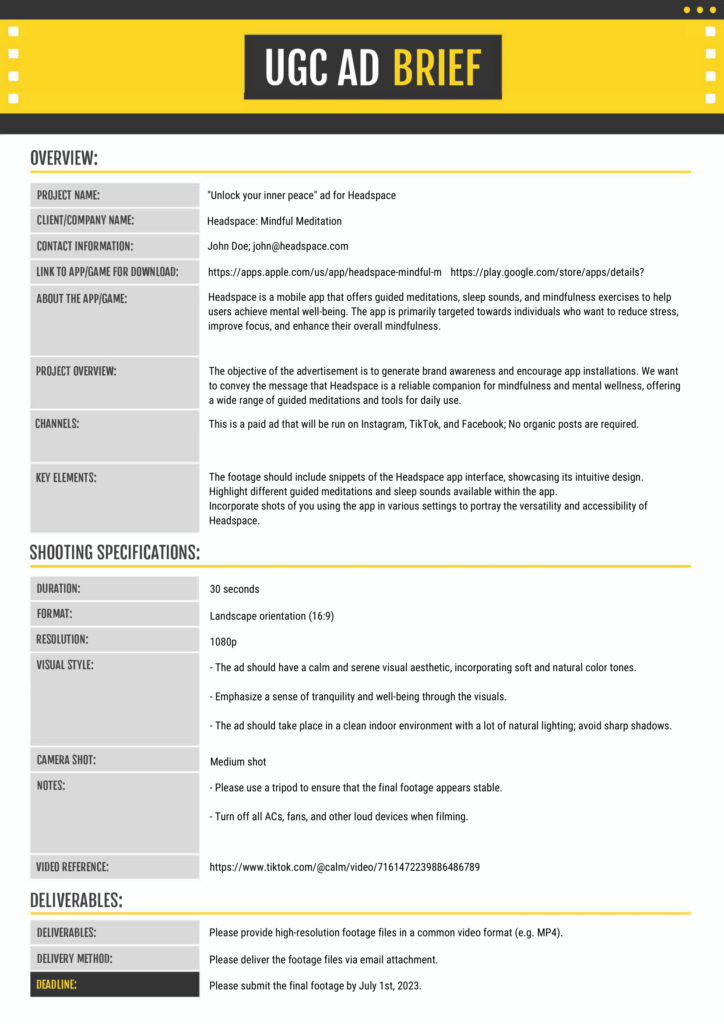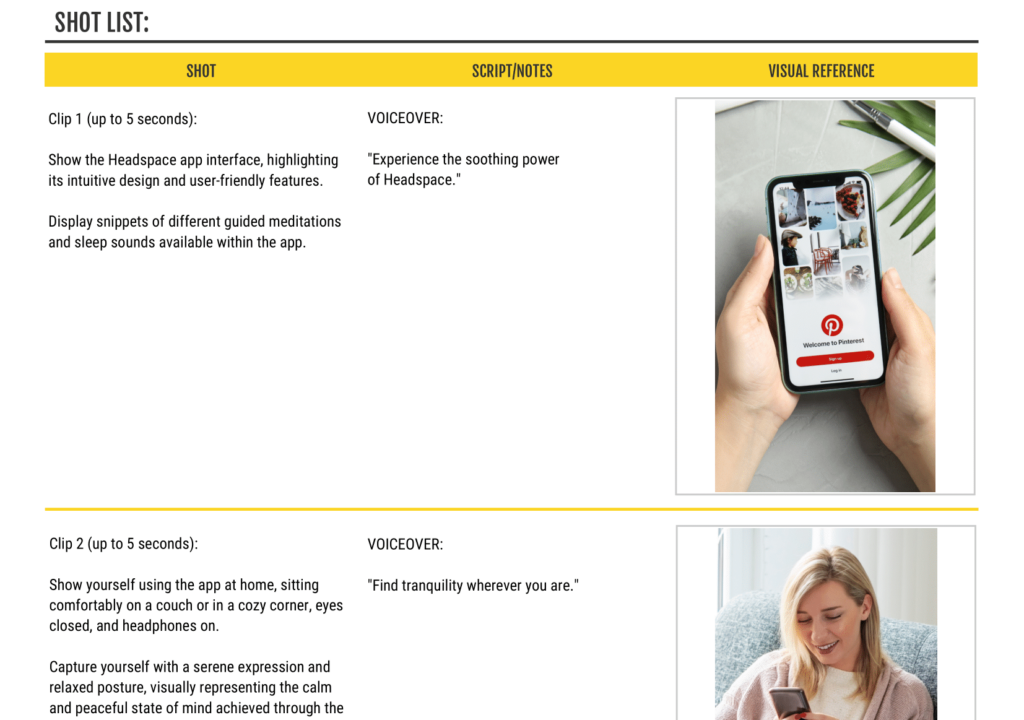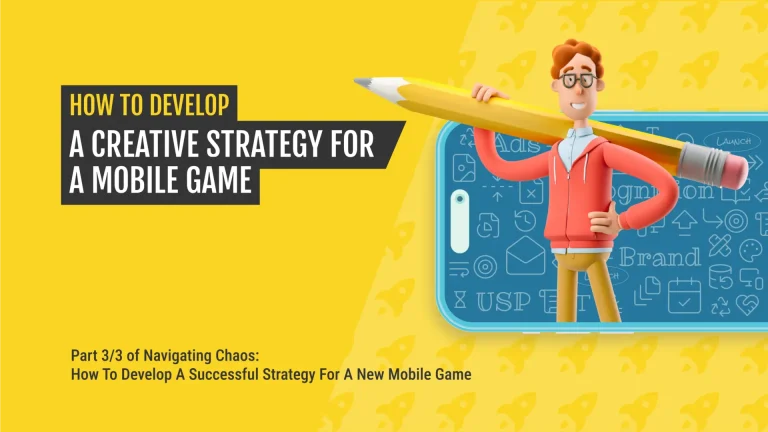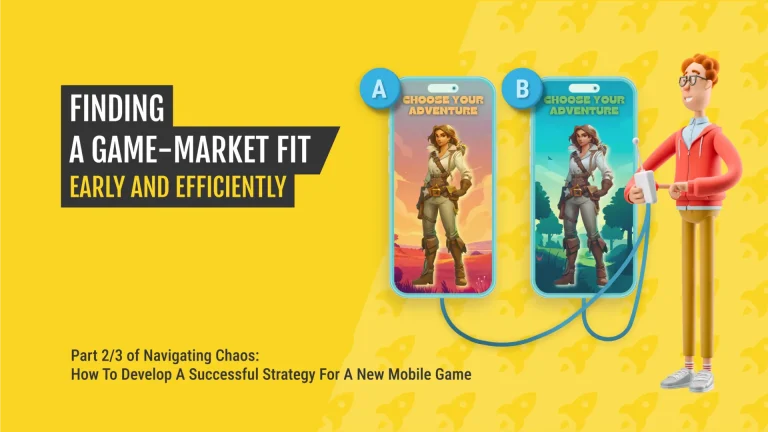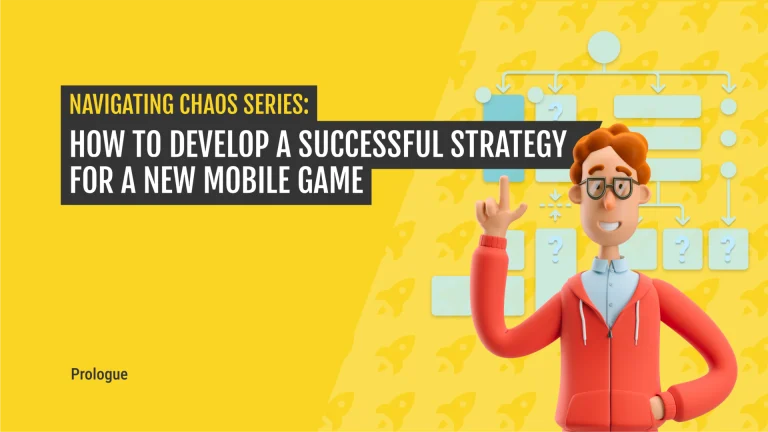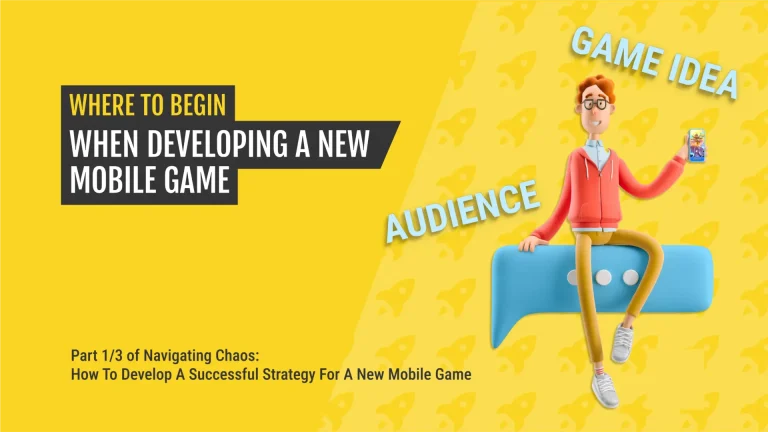Table of Contents
In the digital landscape, user-generated content (UGC) has emerged as a compelling force in advertising and marketing strategy. By harnessing the creative potential of everyday users, brands can tap into authentic and relatable content that resonates with their target audience.
By embracing the collective creativity and experiences of content creators, companies can tap into a vast resource of engaging content. However, to ensure the highest quality and effectiveness, it is crucial to collaborate with a team of skilled content creators who understand the best practices of different platforms.
Through this approach, brands can harness the full potential of UGC while delivering captivating native ads that resonate with their audience.
In this article, we explore the significance of working with UGC, the benefits of collaborating with content creators, and where to find them.
What you will learn:
- The distinction between authentic user-generated content and platform-native ads.
- The various avenues for finding content creators suitable for your UGC ads.
- Key considerations and guidelines for crafting an effective UGC brief.
- Best practices to ensure a successful collaboration with content creators.
- Tips for maximizing the impact of UGC in your marketing strategy.
UGC vs. Platform-Native Ads
In reality, what we often label UGC in the industry can be better understood as platform-native ads. UGC represents content created by genuine users who engage with a product or service, primarily driven by their desire for social recognition and personal value.
While UGC holds intrinsic value within its intended context, it often falls short when it comes to suitability for advertisements. This is primarily because the creators of UGC are not professional actors or experts in video production and advertising best practices.
On the other hand, platform-native ads are professionally crafted advertisements that adhere to the best practices of popular platforms like TikTok, Facebook, or Instagram. While authentic UGC allows brands to tap into the power of user creativity and social validation, platform-native ads provide a polished and optimized approach to advertising that ensures high-quality content.
In this article, we will be referring to platform-native ads as “UGC” or “UGC-style ads.”
Using UGC Ads in Your Marketing Strategy
The Pros
The appeal and popularity of UGC-style ads lie in their ability to present your app or game in a unique and captivating manner. By tapping into user-generated content, you can showcase your product through the lens of real users, giving it an authentic and relatable touch.
UGC offers a refreshing alternative that is often better received by the platform’s audience, especially when considering the specific features and formats of platforms like Instagram Stories, Reels, or TikTok. Users are more likely to engage with ads that blend seamlessly with the content they consume, leading to higher levels of attention and participation.
Moreover, UGC has the potential to go viral, gaining widespread visibility and exposure if it aligns with trending topics or themes. When users find UGC compelling, they are more inclined to share it with their friends and followers, creating a ripple effect of organic promotion. This amplification can significantly expand your reach and attract new users who might have otherwise been unaware of your app or game.
The Cons
It’s also important to acknowledge that this approach comes with certain considerations. Firstly, creating or sourcing UGC requires a separate process, involving external parties such as agencies, influencer managers, or content creators.
Additionally, the production time for UGC is typically longer compared to static banners or video animations. Since UGC involves real people creating content, it takes time to coordinate, film, edit, and finalize the material. This longer production cycle can impact the speed at which you can iterate and test different variations of ads, potentially slowing down the optimization process.
The realm of UGC encompasses various types, ranging from green screen explainers to talking head videos sharing personal experiences, situational comedies based on anecdotes, and content specifically tailored to individual content creators. While this diversity of content is exciting, it can also pose a challenge when determining what will resonate best with your specific app or game.
There is no universal formula or rule that guarantees success across different applications, as each product has its unique audience and requirements. Finding the perfect fit for your app or game requires careful exploration and experimentation.
How to Find Content Creators
When it comes to finding the right content creators for your UGC production, there are several avenues to explore. As an agency, we’ve tried various methods and platforms, each with its own pros and cons.
Content Creator Platforms
When it comes to finding the right content creators, one option worth exploring is content creator platforms like Billo, TikTok Creator Marketplace, and Cameo. These platforms also offer a vast selection of content creators, providing you with a wide range of choices.
The process of managing your collaborations is straightforward, as everything can be handled directly on the platform without the need for complicated contracts or payment methods.
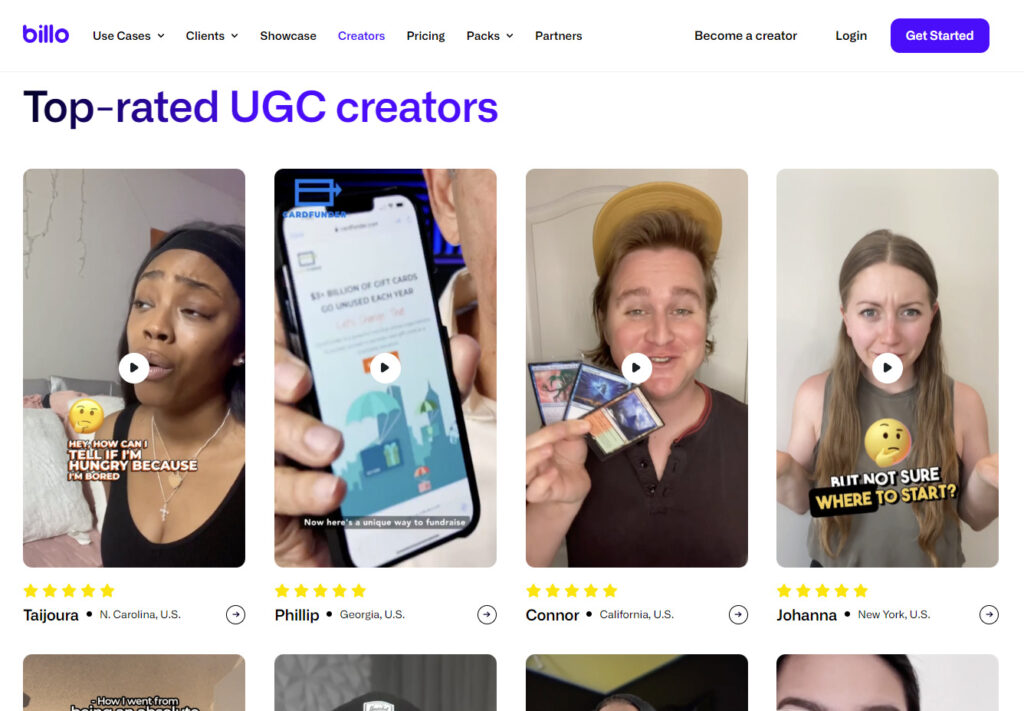
Another advantage of working with content creator platforms is the opportunity to build a relationship with a specific platform and have access to a dedicated account manager who can offer guidance and support throughout the production process.
However, we’ve found that these platforms are not always the most cost-effective, particularly when monthly subscriptions and video fees begin to add up.
Additionally, many of the creative packages offered by these platforms cater more to physical products, like unboxing or testimonials, making it challenging to find a space for content that aligns with mobile apps or games.
Freelancer Marketplaces
Another avenue to explore when searching for content creators is freelancer marketplaces like Upwork and Fiverr. We have personally tested this solution and found it to be a viable option, especially for those who are just starting their UGC journey.
Freelancer marketplaces offer a user-friendly experience, allowing you to easily log in and select the specific services you require.
One notable advantage of these platforms is the ability to negotiate prices with individual creators, making it a potentially cost-effective choice for your UGC needs.
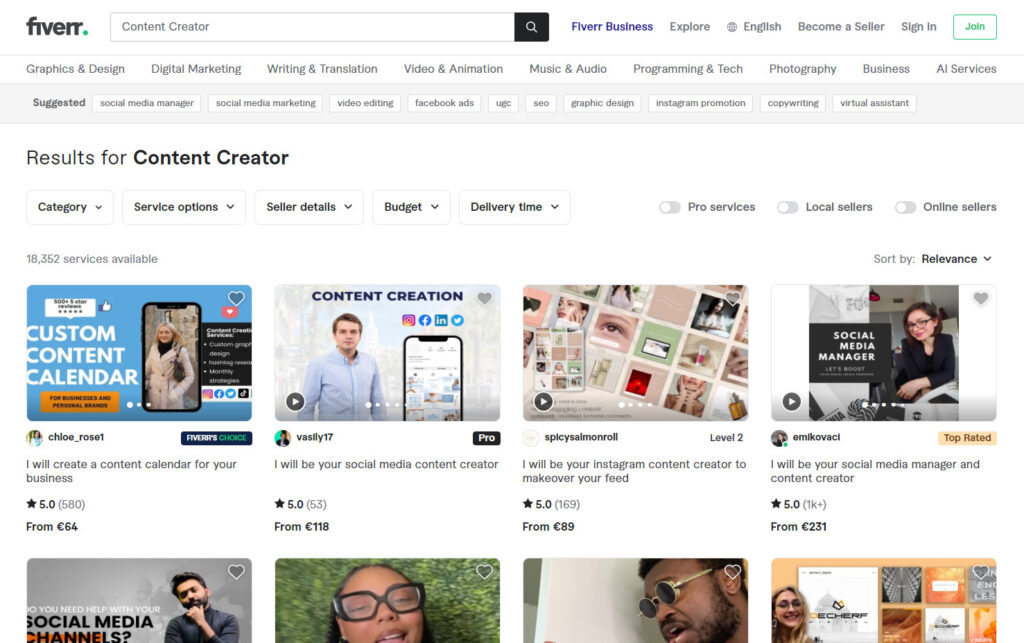
It’s important to note that these marketplaces cater to a wide range of professionals, extending beyond freelance content creators and TikTok influencers. As a result, finding the right talent requires some dedicated searching and careful consideration.
Additionally, it’s important to set realistic expectations for the content produced by freelancers. While many freelancers are highly skilled and capable, the outcome may not always align precisely with your initial vision.
To prevent any potential issues, it’s crucial to be diligent in selecting talent that has a strong portfolio, positive reviews, and effective communication skills. Taking these precautions will help you avoid pitfalls such as poor content quality or ghosting.
Casting Agencies
If you’re seeking an agency that can handle all aspects of the production process, including casting, contract signing, and finding the right individuals who can collaborate with you on your script, casting agencies are worth considering.
Casting agencies like Backstage are especially useful when searching for niche talent like voiceover artists.
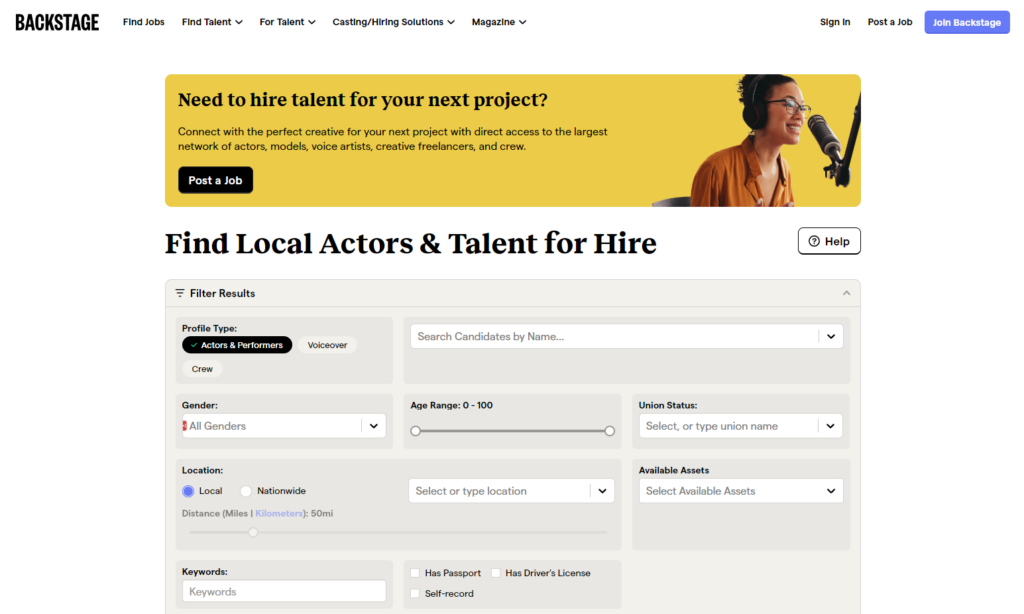
However, it’s important to note that these agencies specialize in finding professional actors (rather than social media content creators), who may not have a deep understanding of platforms like TikTok or the specific style of content you’re looking to create.
Additionally, when working with casting agencies, you’ll be responsible for filming the content yourself. This means you’ll need to handle all aspects of production, including staging, assembling a film crew, and capturing the footage.
While this approach may be suitable for more professional productions where you have the necessary resources and expertise, it may not be as content creator-friendly as other options.
TikTok
Another intriguing option is to search for social media creators directly on TikTok. With its vast user base and diverse content, TikTok offers a rich talent pool to explore and connect with. By leveraging the platform’s search and discovery features, you can discover creators who align with your brand’s vision and content requirements.
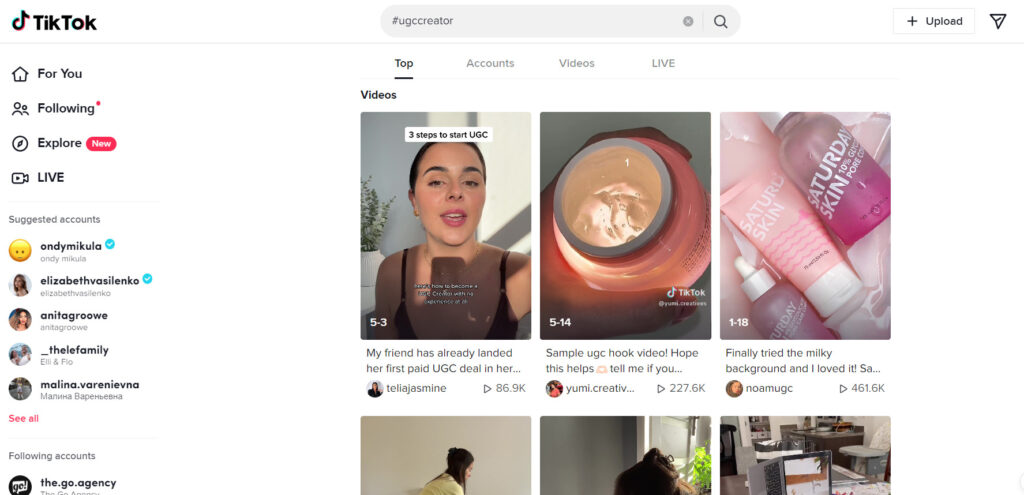
However, this process can be time-consuming, as DMs are limited unless creators follow you first. Ghosting and a low response rate are also common issues, and some creators may demand high fees without room for negotiation.
In your DMs
As a brand with visibility and a social media presence in the online space, you may receive direct outreach from social media content creators. When you run paid ads or manage social media accounts, it’s common to find messages in your DMs or email inbox.
@httpsean Replying to @😎 #greenscreen Here’s a sample of an IG DM I will send to a brand to initiate the conversation of working together! If you find this helpful, let me know! ✨🫶🏻 #ugccontentcreator #howtostartugctoday #howtofindbrandstopitchto #howtofindbranddeals #ugccommunity ♬ original sound - Sean at SM Social | UGC 🇨🇦
@ugcmarine Replying to @officalomalove how to reach out to brands on IG? Here is the template that I use and it works 🥰 #ugccreator #ugcsg #ugccontentcreator #ugccommunity #y#ugcdmpitch #ugcdm ♬ LIMBO - Sped Up Version - keshi
While not all inquiries will be relevant, as many are automated messages from influencers seeking their first contract, there is still potential to discover promising leads who are interested in collaborating with you.
Being approached by creators gives you the advantage of negotiation power, as they initiate contact. However, it’s worth noting that managing the influx of inquiries can be challenging, as it’s not always feasible to thoroughly review each one to find the right fit.
How to Choose the Right Content Creator
Choosing the right content creators from a large pool can be a daunting task. To streamline the selection process, it’s essential to have a standard approach and a clear understanding of your target demographic.
When selecting talent for our UGC ads, we use the Content Creator Checklist below to help us make the most informed decisions.
The Content Creator Checklist
They represent your target audience
By identifying the creators who align best with your brand and can effectively represent you, you can narrow down the options and eliminate candidates who may not be the right fit. So take the time to assess and analyze your audience before making any final decisions.
They have a strong creative portfolio
We prioritize individuals with a strong creative portfolio across platforms like TikTok and Instagram, focusing more on the quality and style of their content rather than their follower count or likes.
They’re charismatic, well-spoken, and have good energy
We look for creators who possess charisma, are well-spoken, and exude positive energy. While these criteria may seem subjective, finding someone likable and relatable can greatly enhance the effectiveness of their content and its resonance with your audience.
They’re easy to work with
It’s crucial to consider whether the content creator is easy to work with, responsible, and communicative. While assessing these qualities may be challenging until you’ve started collaborating, you can gain some insight from the initial messages you exchange. Pay attention to the communication style and responsiveness of potential creators, as it can indicate their reliability. If someone is unresponsive or exhibits a pattern of ghosting in the early stages, it’s a red flag that they may not be dependable in the long run.
Content Creator Questionnaire
One effective strategy we implemented at AppAgent to narrow down the talent pool was creating a simple Google Form questionnaire. This form included questions about the interests and preferred content types of potential collaborators, as well as details about their filming setup.
By sending this questionnaire to our contacts, we were able to gather valuable information that helped us filter out unresponsive individuals. In fact, through this initial filter alone, we eliminated around 80 people who didn’t bother to reply.
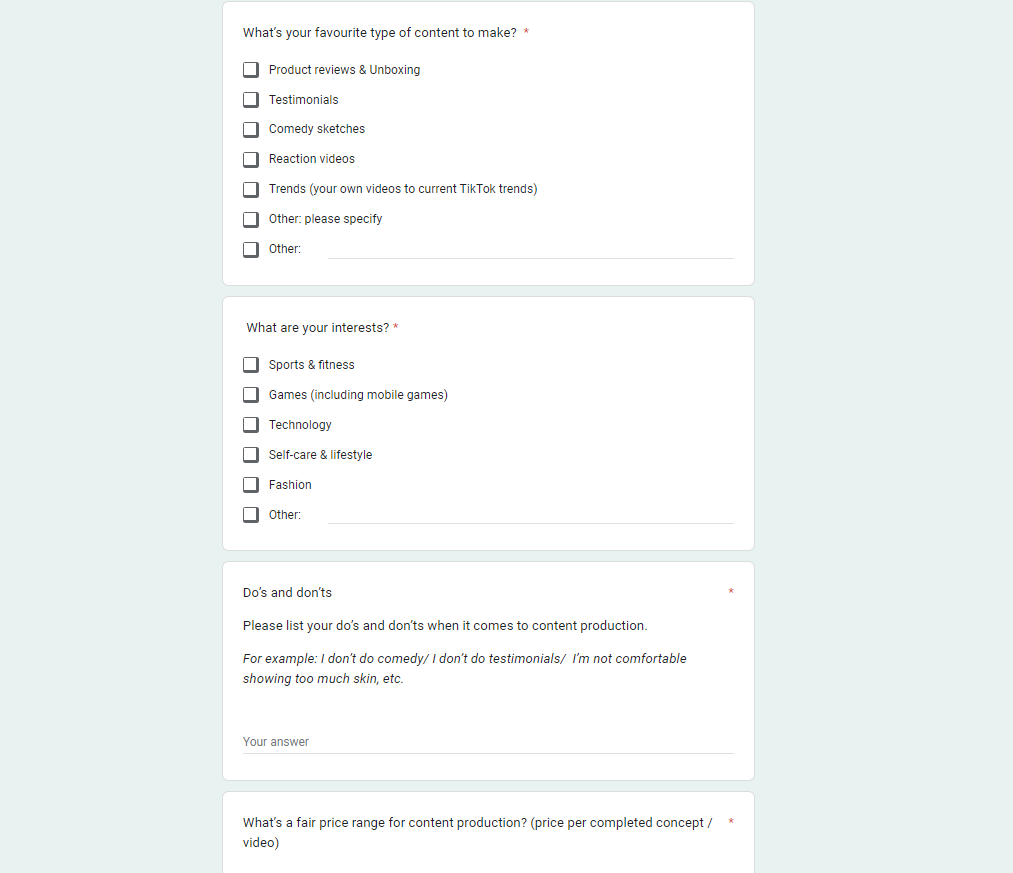
After narrowing down the list, we proceeded to manually review the portfolios of the remaining candidates. This step allowed us to further refine our selection and ultimately identify approximately 100 qualified leads.
If you’re planning to run your own campaign, we highly recommend utilizing a questionnaire like this to gather relevant data and streamline your process from the start. It can save you time and help you identify the most promising content creators for your collaboration.
How to Collaborate with Talent
Crafting the Brief
When it comes to collaborating with content creators, a well-crafted and detailed brief is crucial for a successful partnership. Learning from our past experiences and mistakes, we realized the importance of providing specific information to guide the creators in delivering the desired results.
Our creative brief serves as a comprehensive document, outlining all the necessary details for the project. It begins by introducing the client and directing creators to the relevant app store listing for the app or game.
We also make sure to include clear specifications about the type of footage we expect and any specific requirements.
One essential aspect is providing a script and visual references via a shot list. We’ve found that the closer the reference is to our vision, the better the creators can grasp what we are looking for and deliver accordingly.
You can download a blank template of the UGC Ad Brief and Shot List HERE.
Tips for a Successful Partnership
1. Get Approval BEFORE Production Begins
If you’re an agency working with clients, we highly recommend seeking approval for all necessary elements before production begins. Communication with both the client and content creators is crucial to guarantee a successful outcome that meets everyone’s expectations.
This means involving the client in the ideation process, especially when it comes to scripted content. Before production begins, we provide the client with the UGC brief, script, and any visual reference to ensure that the concept aligns with their expectations.
By obtaining approvals before the production stage, we avoid potential issues where the final edit doesn’t meet the client’s expectations. This proactive approach saves us the time and effort of going back to content creators and requesting revisions.
2. Request Raw Footage from Content Creators
As an agency, we always acquire raw footage from content creators. There are several reasons why this approach has worked well for us.
Firstly, it eliminates the dependency on content creators to provide us with the final edit. By having the raw footage, we can make iterative changes and adjustments without having to go back to the creators and request additional recordings.
Furthermore, there are situations where we have certain client assets that we prefer to keep confidential. Having the ability to handle the editing in-house gives us greater control over the content and ensures that sensitive assets are protected.
In general, we have found that working with raw footage gives us a larger pool of material to work with, enabling us to create content in various iterations and versions to cater to different needs.
It also allows us to focus on creating a cohesive and impactful edit that aligns with the client’s goals, rather than solely relying on the content creator’s editing skills, which may not always produce the desired result.
3. Always Ask for More
When we communicate with content creators, we express our desire for a little extra footage. We ask them to record different intros or send us supplementary clips that they might think won’t be useful. This allows us to have more material to work with and facilitates the creation of diverse iterations and variations.
Different platforms have distinct functionalities and requirements. For example, while Instagram typically employs a “download now” call-to-action, Snapchat emphasizes the swipe-up feature.
By receiving a variety of content from creators, we can tailor our approach to different platforms and optimize the performance of our campaigns.
4. Set your Production Standards
When collaborating with content creators, it’s crucial to establish clear production standards. Content creators may not always share your vision, even when you provide references and specific instructions.
You should never have to settle for subpar content–every second of the footage should be utilized effectively. However, it’s equally important to provide constructive feedback when rejecting footage. Simply stating that the video isn’t up to your standards isn’t helpful. Instead, explain the specific issue, such as low resolution or poor audio quality, and suggest improvements.
It’s crucial to remember that content creators are often creative individuals, and when working with amateurs, you should aim to support their growth rather than discourage them. By offering guidance and constructive suggestions, we can foster a collaborative environment that benefits both parties, creating a win-win situation.
We have developed a filming guide and downloadable checklist to ensure the footage provided by talent is up to our standards. This guide consists of a set of do’s and don’ts, which help creators understand the boundaries and expectations.
5. Invest in Long-Term Partnerships
Building long-term partnerships with content creators is a valuable investment in your UGC productions. While the exact number of long-term partners may vary, having a reliable pool of creators to collaborate with can significantly enhance your content creation process.
Working with familiar content creators offers numerous advantages. They already know your product or brand, understand your expectations, and have a proven track record of successful cooperation. This familiarity ensures smoother workflows, adherence to deadlines, and a level of reliability you can depend on.
Long-term partnerships are particularly beneficial when working with freelancing marketplaces like Fiverr. By helping creators succeed and demonstrating your reliability as a business partner, you establish a strong foundation for continued collaboration.
Final Thoughts
User-generated content (UGC) has become a crucial strategy in digital marketing. Collaborating with social media content creators allows brands to tap into the creative potential of everyday users, delivering high-quality, platform-native ads that resonate with the audience.
Finding the right content creators for UGC production involves exploring options like content creator platforms, freelancer marketplaces, casting agencies, TikTok, and direct outreach. Each avenue has its pros and cons, so careful consideration is necessary to find the best fit.
Establishing clear production standards, providing constructive feedback, and investing in long-term partnerships with content creators contribute to successful collaborations.
By embracing UGC and collaborating with skilled social media content creators, brands can harness the full potential of authentic and engaging content. This approach allows for the creation of captivating platform-native ads while maintaining a connection with the target audience.
With careful exploration and a focus on collaboration, brands can elevate their marketing efforts and create meaningful connections through UGC.
Mastering UGC: How to Build Successful Collaborations with Content Creators
Want to take your UGC production to the next level? Watch our recent webinar, where you’ll learn how to collaborate with creators to achieve the content you desire (and deserve!).
This session is packed with valuable insights, including foolproof tips for identifying and partnering with the right content creators, crafting effective creative briefs, and producing high-performing UGC ads.
